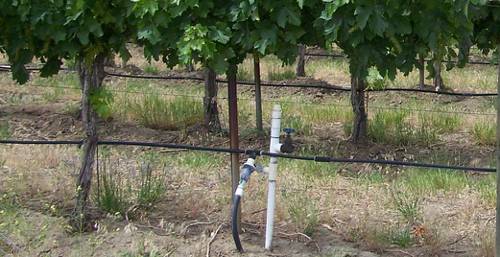FAQ About Indoor Plant Irrigation System Comparisons

What are the common types of irrigation systems for indoor plants?
Common types of irrigation systems for indoor plants include drip irrigation, self-watering pots, wicking systems, and automatic misting systems. Each system has unique features tailored towards different types of plants and indoor environments.

How does a drip irrigation system work for indoor plants?
A drip irrigation system delivers water directly to the base of the plant through a network of tubing and emitters. This system helps conserve water by targeting the roots directly and minimizing evaporation and runoff.

Are self-watering pots effective for indoor plants?
Yes, self-watering pots are effective for maintaining consistent moisture levels in indoor plants. They have a reservoir at the bottom that supplies water to the plant as needed, reducing the frequency of manual watering.

What factors should be considered when choosing an indoor plant irrigation system?
When choosing an indoor plant irrigation system, consider factors such as the type of plants, the size of the collection, budget, ease of installation and maintenance, and the frequency of travel or absence from home.

How easy is it to install a wicking system for indoor plants?
Installing a wicking system is relatively straightforward. It involves placing a wick material that connects the plant's roots to a water source, allowing the plant to draw up moisture as needed. This method is cost-effective and low-maintenance.

Can automatic misting systems be used for all types of indoor plants?
Automatic misting systems are best suited for plants that require a high humidity environment, such as ferns and orchids. They are not recommended for plants that prefer dry conditions, as excessive moisture can lead to rot.

What is the cost range for various indoor plant irrigation systems?
The cost of indoor plant irrigation systems can vary widely. Basic wicking systems and self-watering pots can start from as low as $10-$30, whereas sophisticated drip irrigation and automatic misting systems can range from $50 to several hundred dollars.

How do self-watering pots differ from traditional pots?
Self-watering pots typically include a built-in water reservoir at the base, which allows the plant to absorb water as needed through capillary action. This differs from traditional pots, which require more frequent manual watering.

Can indoor plant irrigation systems help conserve water?
Yes, indoor plant irrigation systems like drip irrigation and self-watering pots are designed to conserve water by delivering moisture directly to the plant roots, reducing waste from evaporation and runoff.

What maintenance is required for a drip irrigation system?
Regular maintenance of a drip irrigation system includes checking for clogged emitters, ensuring that tubing connections are secure, and cleaning the system to prevent mineral buildup and blockages.

Are indoor plant irrigation systems eco-friendly?
Many indoor plant irrigation systems are environmentally friendly, as they help conserve water and minimize the use of resources. Systems like drip irrigation are especially eco-friendly due to their efficiency in water delivery.

Can you automate an indoor plant irrigation system?
Yes, many indoor plant irrigation systems can be automated using timers and sensors to schedule watering times, adjust for humidity levels, and ensure that plants receive the right amount of water.

What are the downsides of using a wicking system for indoor plants?
While wicking systems are low-maintenance and inexpensive, they can lead to over-saturation if not monitored properly. Additionally, not all types of soil are suitable for wicking systems, as some may impede effective water absorption.

How reliable are automatic misting systems for indoor plants?
Automatic misting systems are generally reliable for maintaining humidity levels for plants, but their effectiveness depends on proper setup and regular maintenance to prevent nozzle clogs and ensure even mist distribution.

Can self-watering pots be used for large indoor plants?
While self-watering pots are primarily designed for smaller indoor plants, larger versions are available that can accommodate bigger plants. However, they might require more frequent refilling to maintain adequate moisture levels.

What are the advantages of using a drip irrigation system?
The advantages of using a drip irrigation system include water conservation, targeted water delivery to plant roots, reduced manual watering time, and the ability to scale for larger indoor plant collections.

Is it necessary to have a water source nearby for automatic irrigation systems?
Yes, most automatic irrigation systems require proximity to a water source for optimal functionality. This is necessary to ensure a consistent water supply for the plants through tubing or other delivery systems.

How can one ensure the longevity of an indoor irrigation system?
To ensure the longevity of an indoor irrigation system, regular maintenance is essential. This includes cleaning components, checking for clogs, inspecting for leaks, and replacing worn-out parts to prevent system failure.

Can an indoor irrigation system help in reducing plant care time?
Yes, using an indoor irrigation system can significantly reduce the time spent on plant care by automating the watering process and ensuring consistent moisture, allowing plant owners to focus on other care aspects such as pruning and pest control.

Are there any common misconceptions about indoor plant irrigation systems?
A common misconception is that all indoor plants require the same type of irrigation system. In reality, different plants have varying water needs, and it’s important to choose a system that aligns with the specific requirements of each plant type.
